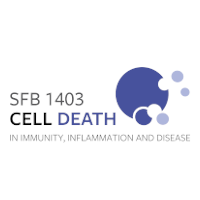A disease resistance assay in Nicotiana benthamiana reveals the immune function of Response to HopBA1
Abstract
EDS1 functions with PAD4 or SAG101 (Feys et al., 2005), the epss mutant is completely defective in the EDS1 signaling pathway. Therefore, our result is consistent with the model that TIR NADase products mediate immunity via the EDS1 signaling pathway (Huang et al., 2023). In summary, our results have uncoupled the disease resistance activity of RBA1 from the host cell death that is induced by 2',3'-cAMP/cGMP synthetase activity. Similar to RBA1, the Arabidopsis TIR-containing NLR Suppressor of npr1-1 constitutive 1 (SNC1) does not seem to require 2',3'-cAMP/cGMP synthetase activity (i.e., nuclease activity) for disease resistance (Tian et al., 2022). Therefore, it is possible that there are cell death-signaling receptors that perceive 2',3'-cAMP/cGMP. However, for cell death signaling, it is essential that EDS1 receptor complexes perceive the TIR NADase products. Another possibility is that there may be a concentration threshold beyond which TIR NADase products trigger cell death. In this scenario, both TIR NADase and 2', 3'-cAMP/cGMP synthase activities are required to reach the threshold for cell death induction. In particular, although the RBA1(C83A) variant retains NADase activity (Yu et al., 2022), it remains to be seen whether this variant can produce TIR NADase-derived products that exceed the aforementioned “threshold” in planta.
Read more at Physiol. 2024 Jul 8
